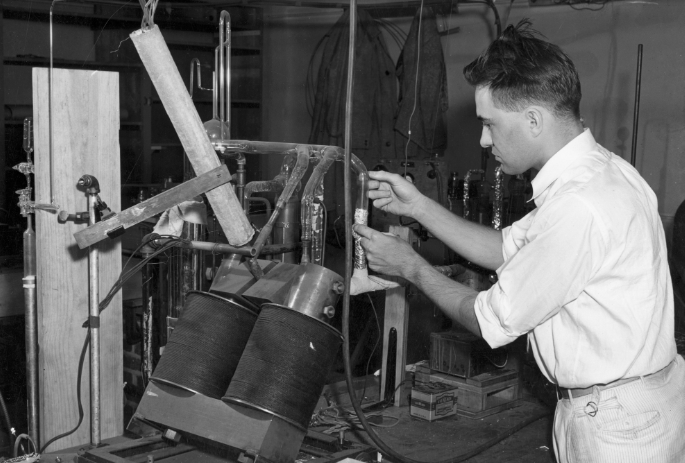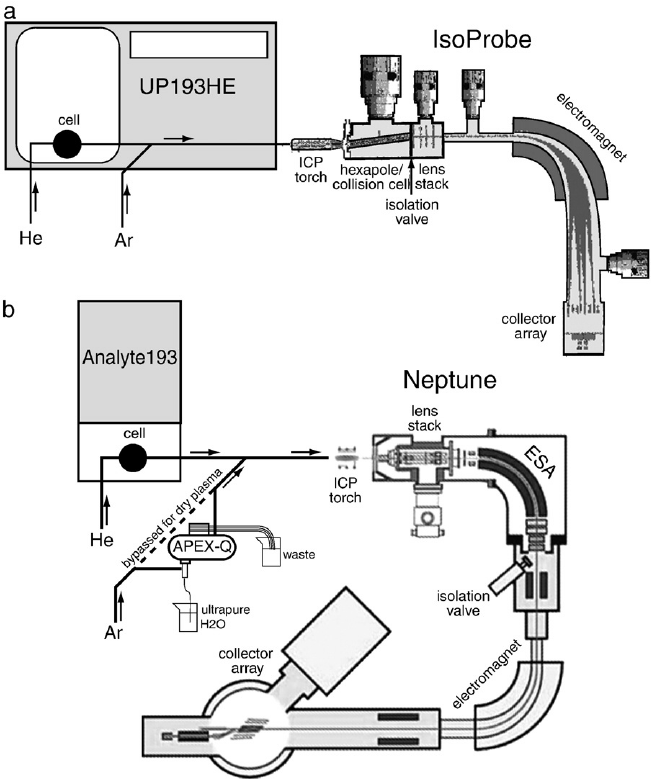If you have been following my blogs or have taken an interest in detector technologies, then you probably know about ATONA technology already. If you’re not familiar, then for a short overview try here.
In brief, ATONA is a Faraday amplifier system that avoids many of the major disadvantages of traditional resistor-based amplifier systems, in particular avoiding the usage challenges of the higher ohmic value systems.
Anyway, I was recently at the Goldschmidt geochemistry conference in Lyon and was asked by a visitor to the Isotopx booth how much it would cost for us to add ATONA technology to their existing instrument, which was not an Isotopx product nor was it an instrument type of the kind we usually fit ATONA to. I do get asked this question quite a lot, and unfortunately, it’s a hard one to answer. This is mainly because the process of getting another vendor’s technology to talk to our technology would be problematic. And of course, there is the possibility of upsetting the other vendor, who may not want our technology bolted to their product! Suffice to say that we haven’t done it so far.
But the conversation in Lyon did get me thinking: would ATONA technology benefit other analytical instruments? Let’s consider some other analytical techniques and the potential suitability of ATONA.

Probably the most obvious candidate is multicollector ICP-MS (MC-ICP-MS). Analytically it is a technique with enough of an overlap with TIMS to be worthy of consideration. First consider analysis using “solution” mode, that’s to say using samples introduced into the ICP torch via nebulization of liquid samples. Here, the analyte concentrations are often quite well known beforehand, the amount of sample is likely well known, and the name of the game is achieving as much precision as possible using the available sample. The user predefines what collector type to use, how fast the analysis is, and how much sample is consumed. In other words, this is a very similar analysis to that done by TIMS, meaning ATONA would be absolutely ideal.
But what about the other form of sample introduction, laser ablation? I worked on laser ablation MC-ICP-MS quite a lot in the late 1990’s and I admit to finding it a challenge at that time. Even when ablating standards such as NIST glasses, the sensitivity could change dramatically with slight changes in the laser or instrument set up / tuning. When looking at real samples, it could be very hard to second guess how much analyte you’d see – and if you were ablating small, discrete artefacts from your real sample then your signal might be very short-lived with sudden increases and decreases in ion beam intensity, with huge variation from the lows to the highs.

So… more of a challenge than solution-based analysis? Definitely yes, in my opinion. But I believe the rapid changes in ion beam intensity and potential requirement for wide dynamic range would work extremely well with ATONA, in fact would fit perfectly with two of its key benefits – that wide dynamic range and the super-rapid Tau decay. But what about the short-lived analyte signal? Much of the use of ATONA, particularly for TIMS, uses long integration times, typically 10 seconds or more. That’s not going to work for laser ablation analysis!
I asked around at Isotopx about shorter integration times. The good news is that the applications team, and indeed some customers, have been taking measurements at shorter integration times. I gather that even down at the tens of milliseconds integration time the data looks good. This bodes very well for the kinds of transient signals that are common with laser ablation MC-ICP-MS. I’ll return to this in more detail in a later blog.
Moving on from isotope ratio systems, what about single detector systems, would they benefit from ATONA? The first analytical instrument type I ever used was quadrupole ICP-MS. In the early days these had a clumsy (and not always effective) system to automatically switch over from an ion counting detector to a Faraday detector as the ion beam size increased. This is due to the huge dynamic range often required by such systems. I’m told the switch-over now works much better than in the early days, happening on the millisecond scale and producing near-flawless changes between the detector types.
The name of the game for a quad ICP-MS is speed and dynamic range. At the lower end, single counts per second (or below!) are often required, which is out of scope even for ATONA. This means an ATONA-equipped quad ICP-MS would still require an ion counter. So, although such a system would benefit from the extended dynamic range of ATONA, the huge gains in low noise and rapid Tau wouldn’t be so much of a benefit as they are for an isotope ratio system. Therefore ATONA would probably be overkill for a quad ICP-MS.
Are there any single collector instruments that would benefit? Ideally those where the analysis speed is secondary to the precision of the analysis, and where a wide dynamic range could help. I can immediately think of two such systems – glow discharge MS (GD-MS) and also ion microprobe. Both of these technologies could feasibly be enhanced analytically by ATONA. That doesn’t mean we’ll rush out and build them, however!
And finally, what about the life sciences? After all, that’s where the REAL money is in mass spectrometry! In short, it depends. For plenty of life science mass spec, particularly targeted analysis, you usually know your analyte concentration pretty well. That means a huge linear dynamic range is not a priority (and indeed, plenty of the mass spectrometers themselves don’t exhibit a particularly wide dynamic range). High precision is also rarely a priority, coming a distant second to speed. So these applications are not likely to benefit hugely from ATONA.
For non-targeted analysis, a wider dynamic range would be useful. But in these circumstances, you’re typically looking at hundreds if not thousands of compounds, with incredibly short dwell times for each. Precision is barely a consideration; you don’t really need quantitative data – simply answering the question “is there any of this stuff there?” is sufficient! So again, probably out of scope for ATONA. In summary, Isotopx isn’t about to move into the world of Q-TOFs and Orbitraps any time soon!
If I’ve missed any potential uses for ATONA, please let me know, even though this is a purely hypothetical discussion. As always, please send me your thoughts and comments (Stephen.guilfoyle@isotopx.com).
